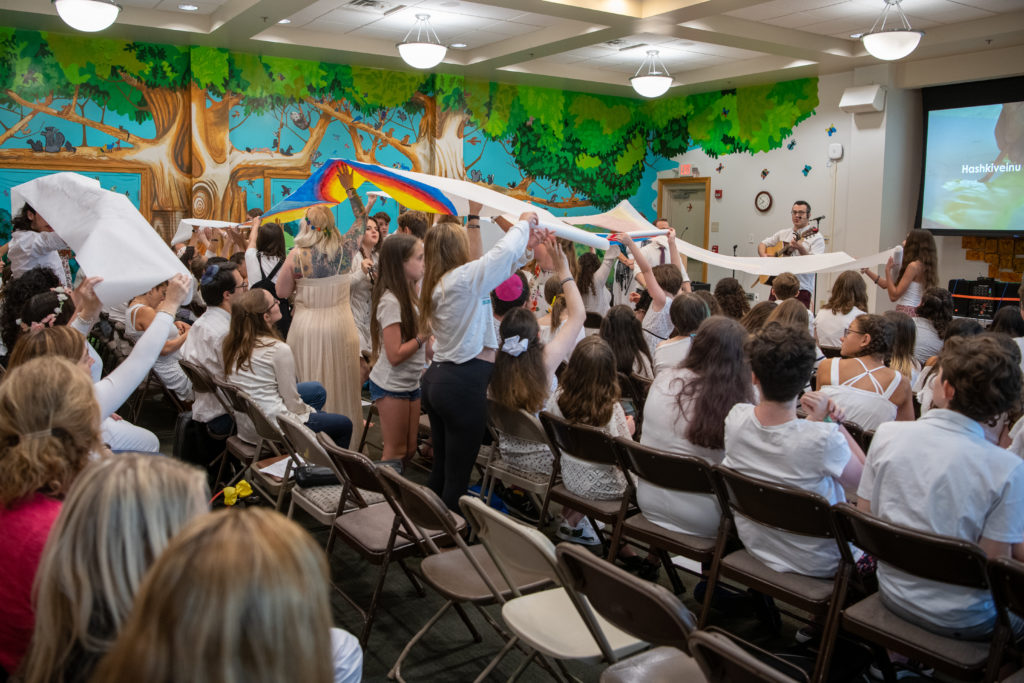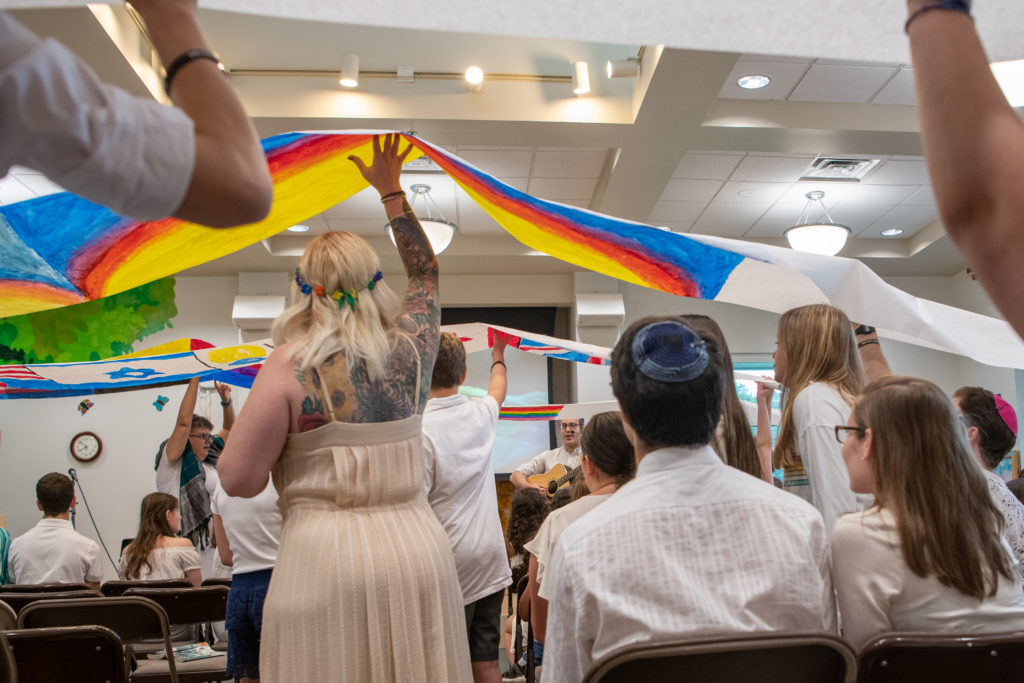Written by Rabbi Elisa Koppel, Session 3 Faculty Dean
Since I was first a camper in 1983, I’ve spent time at 6 different URJ Camps. While they all have some aspects in common between them, each camp has its own traditions, its own melodies, its own style of prayer.
T’fillah is a balance between keva (the fixed prayer, the actual text) and kavannah (the meaning behind the prayers, or the intention). That balance is manifested in a variety of ways at 6 Points Creative Arts Academy, and is most evident in the Friday Night Shabbat service experience.
On Thursday night and Friday afternoon, the community gathers for Shabbat Prep in small groups, within arts disciplines: culinary, visual, classical/contemporary theater, musical theater, dance, creative writing, and instrumental/vocal music. Each group is assigned a prayer in the service (the kavanah) and tasked with creating their offering to express that prayer through their art. Culinary Arts braids and bakes the challah and makes special treats to go with Shabbat dinner; musical theatre creates, choreographs, and performs the Jewsical (musical theater type song which interprets the weekly Torah portion); dance interprets and expresses one of the prayers through movement; etc.
Last Friday night, as I had the honor of leading the service, I found myself smiling and singing through a blur of tears as Visual Arts presented Hashkiveinu. I had worked with the group in prep and knew what to expect; and seeing it come together moved me. The group had created panels of paintings to express the idea of creating a shelter of peace, inclusivity, and hope.

On one panel were the Wings of the Divine Presence and the Hebrew text of one of the prayers. On another were the flags of the US, Israel, Canada, and Great Britain—the countries from where our community comes. On the third were a sunset and sunrise, expressing the movement from evening to morning. And on the fourth were the pride flags, a recognition of the inclusive attitude we have at camp, as well as a painted prayer for the world at large.
Visual Arts campers and staff covered the camp community with the banners, weaving the panels together in the middle, as the songleader led the community in the prayer. Seeing the proud smiles of the participants as they expressed their prayer, and at the same time seeing the smiles of members of the community who recognized their own inclusion in this prayer, was truly meaningful. And a true expression of the balance between keva and kavanah. Those banners remain in the Collection Room (a room the community passes through daily—usually multiple times), as an enduring prayer and an overt message of our inclusive diversity.
 I have many moments like this while on faculty at CAA. I recognize the importance of the values upon which this camp is built—and witness those values through the prayers of our artists: they allow me to pray that someday, those prayers may be realized—not just in camp, but throughout the world.
I have many moments like this while on faculty at CAA. I recognize the importance of the values upon which this camp is built—and witness those values through the prayers of our artists: they allow me to pray that someday, those prayers may be realized—not just in camp, but throughout the world.
